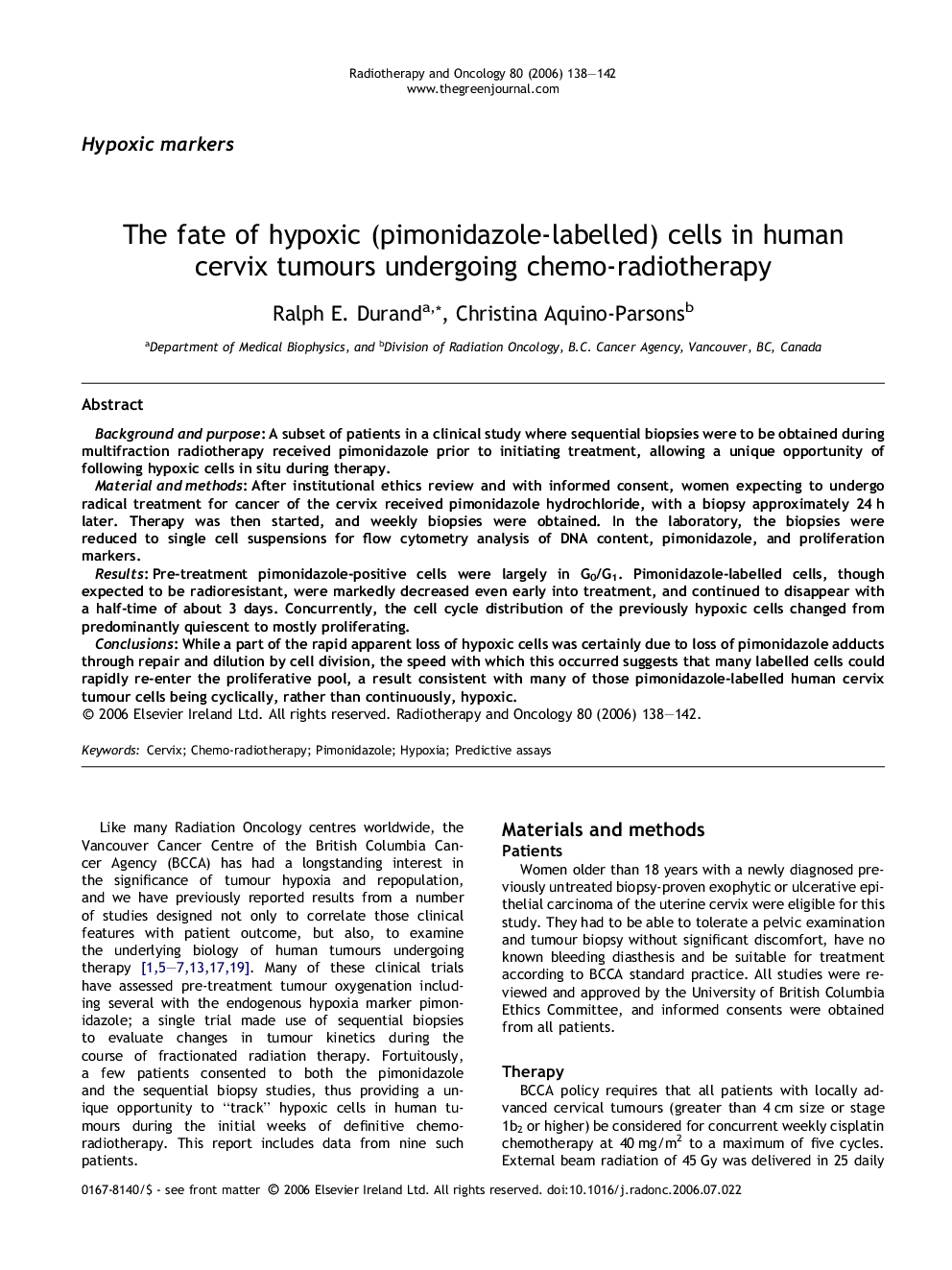| Article ID | Journal | Published Year | Pages | File Type |
|---|---|---|---|---|
| 2161315 | Radiotherapy and Oncology | 2006 | 5 Pages |
Background and purposeA subset of patients in a clinical study where sequential biopsies were to be obtained during multifraction radiotherapy received pimonidazole prior to initiating treatment, allowing a unique opportunity of following hypoxic cells in situ during therapy.Material and methodsAfter institutional ethics review and with informed consent, women expecting to undergo radical treatment for cancer of the cervix received pimonidazole hydrochloride, with a biopsy approximately 24 h later. Therapy was then started, and weekly biopsies were obtained. In the laboratory, the biopsies were reduced to single cell suspensions for flow cytometry analysis of DNA content, pimonidazole, and proliferation markers.ResultsPre-treatment pimonidazole-positive cells were largely in G0/G1. Pimonidazole-labelled cells, though expected to be radioresistant, were markedly decreased even early into treatment, and continued to disappear with a half-time of about 3 days. Concurrently, the cell cycle distribution of the previously hypoxic cells changed from predominantly quiescent to mostly proliferating.ConclusionsWhile a part of the rapid apparent loss of hypoxic cells was certainly due to loss of pimonidazole adducts through repair and dilution by cell division, the speed with which this occurred suggests that many labelled cells could rapidly re-enter the proliferative pool, a result consistent with many of those pimonidazole-labelled human cervix tumour cells being cyclically, rather than continuously, hypoxic.
